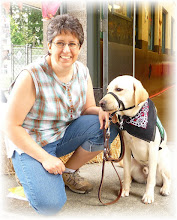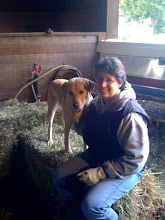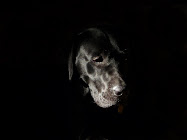 Katharine from http://http//www.ponytalesblog.com/ asked about fit of a snaffle bit for her little guy, Panama. In the first picture you see an Eggbutt snaffle, the arrow points to the rise of the bit on the outside, my opinion is that the horses lips should stop just about in here, or the bit will be to small. I would give an 1/8th of an inch to the cheek piece, on both sides, or you risk pinching the lips. I like Eggbutts because of the 1/2 inch or so of metal before the joint, they very seldom pinch.
Katharine from http://http//www.ponytalesblog.com/ asked about fit of a snaffle bit for her little guy, Panama. In the first picture you see an Eggbutt snaffle, the arrow points to the rise of the bit on the outside, my opinion is that the horses lips should stop just about in here, or the bit will be to small. I would give an 1/8th of an inch to the cheek piece, on both sides, or you risk pinching the lips. I like Eggbutts because of the 1/2 inch or so of metal before the joint, they very seldom pinch. Bridle adjustment as I have been taught, you need to have 1 1/2 wrinkles at the corner of the lips, at least one wrinkle. Katharine if your Eggbutt sticks out much more than this it could be to big for Panama. Eggbutt snaffles are made in 4, 4 1/2, 4 3/4, 5, 5 1/2 inch widths, they have the most sizes I believe of all the bits. Chances are if you just bought your bit off of the shelf it is a 5 inch. Panama may need a 4 3/4inch, which is also a popular Arab size. All of my bits I have shown you today are 5 inch bits, except for the Kimberwicke, it is a 5 1/2 inch, it was Mickeys bit, she has a wide mouth and nose, so a 5 inch rubbed to bad where the bridle attaches.
Bridle adjustment as I have been taught, you need to have 1 1/2 wrinkles at the corner of the lips, at least one wrinkle. Katharine if your Eggbutt sticks out much more than this it could be to big for Panama. Eggbutt snaffles are made in 4, 4 1/2, 4 3/4, 5, 5 1/2 inch widths, they have the most sizes I believe of all the bits. Chances are if you just bought your bit off of the shelf it is a 5 inch. Panama may need a 4 3/4inch, which is also a popular Arab size. All of my bits I have shown you today are 5 inch bits, except for the Kimberwicke, it is a 5 1/2 inch, it was Mickeys bit, she has a wide mouth and nose, so a 5 inch rubbed to bad where the bridle attaches.
Where this arrow points you can see the lips stop at the swell or rise of the mouthpiece to the outside, the lips are not bulging over the ring hole of the bit so they wont get pinched. It is the same with the Eggbutt or the D ring. Either of the prior bits is a personal preference for English pursuits, and often used for starting horses, even it ridden western. The round ring snaffle tends to be a western bit.

This is the Eggbutt again, always make sure the arch of the bit is towards the back when you put it in the horses mouth, for tongue room.
 Not upside down like this, ouch it would really poke the roof of the horses mouth, and could cause them to flip over from the pain.
Not upside down like this, ouch it would really poke the roof of the horses mouth, and could cause them to flip over from the pain.
And the Kimberwicke, it often gets a bad wrap. I personally think it has its place with beginner riders, like 4-H. It is not used at Hunter Jumper shows and in really frowned upon in English circles. It is esentially an English bit with a short shank. I have it pictured here because I have seen it put on the bridle upside down, yes upside down. Even an accomplished trainer I know put it on a clients horse upside down. So, this shows it right side up like it is supposed to be, this particular bit has a solid curb mouth, not a broken snaffle mouth piece.

Even my nylon wonder bit for Mickey has a slight curve to the inside, so you can tell what direction to put the bit in.

You can see how much curve and tongue relief this round ring snaffle has, also copper inlay in a sweet iron mouth piece, with stainless steel cheek pieces. I have said before that it is my favorite bit, Les Vogt stamped. (which means nothing, I just think its cool LOL)
One more thing I personally want to impress on people is, not to buy cheap bits. Chrome plated bits only start peeling and they end up cutting the horses mouth. There are also cheap stainless bits too, just look for smooth finishing with no pits or burs left on the metal.
I hope I answered Katharines questions, that or I created more LOL Let me know if there are any more questions.
Some of you may have noticed that I have a curb strap on my round ring snaffle. It is to keep the bit from pulling through the horses mouth, I have had that happen, and it isnt fun, it was while leading and a horse spooked. Anyway, also the reins have to go above that curb strap or they interfere with each other (see picture).
Thanks vaquero girl.











Good advise. I like snaffles, my favorite is a Mylar, the other is a Vogt. You might want to do a bit about rein placement and curb chains to go along with the bitting advise.
ReplyDeletePam, what a good post! My questions:
ReplyDelete1. When you measure a bit, where are you measuring from? The arrow in your first picture?
2. Should the bit buckle at all? That's what makes me wonder if it's too big -- it seems to be buckling a bit inside his mouth.
3. Regarding which direction the bit goes, you now have me very worried that I have it in backwards!!!! My bit is thinner and has a slightly more pronounced curve than yours. (It's also not an eggbutt.) Therefore I'm having a hard time seeing which way yours curves. Should the curve point downward, toward the tongue, or upward, away from it?
Katharine
ReplyDelete1. When you measure a bit you measure from the inside of the ring to the inside of the ring. Lie the bit flat and measure the inside distance.
2. Yes the bit needs to "buckle" so that the tongue can move, that is why they are jointed. But if it is to big it will bend to much and may hit the roof of his mouth. That is why bit fitting can be an art sometimes. I suggest you have your trianer take a look next time you have a lesson.
3. The curved part always curve towards/around the tongue. You must have a D ring bit? It should have the same curved mouthpiece.
It is really hard to explain and not show LOL
Lay the bit in your hand where his tongue would be. If it lies flat and curves around your hand that is right. If it forms a point in the middle it is upside down. That is the best way I can explain it.
Need to have more visuals, I dont own a D ring. In my pictures I have the bit pointed towards me, I would be standing in front of the horse if it was in a horses mouth.
I will post another picture with some more marks.
Very interesting post. You put a lot of time into organizing and preparing it. Thanks for that. :)
ReplyDelete~Lisa
Thanks for giving such a great information about horse products
ReplyDeleteYour products horse snaffle bits are really good to use
I'm very crazy about horses
keep doing well. And we are hore bits suppliers
horse snaffle bits